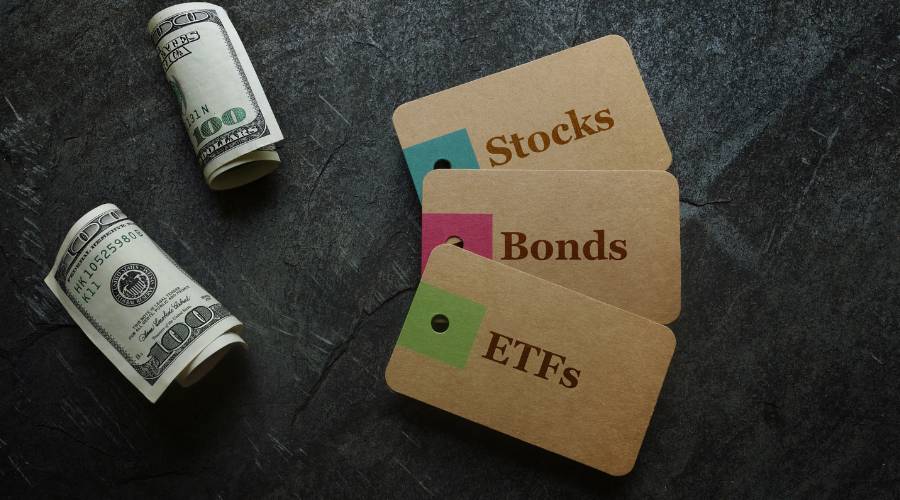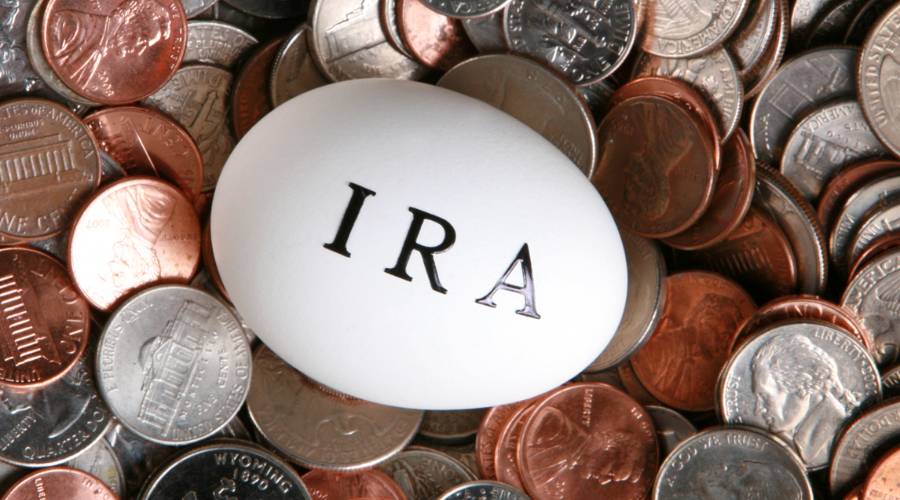When it comes to investing, gold is often one of the first metals that come to mind. Gold has been a symbol of wealth for centuries and many investors seek to add it to their portfolios to diversify and protect their assets. But is investing in gold a good idea? Before taking the plunge and investing in gold, you should know a few things.
From understanding the different types of gold investments and the associated benefits to understanding the current gold market, this article will provide the information needed to decide whether or not investing in gold is right for you.
If you are interested in investing, make sure to take a look at our highest recommended companies for this year!
>> Click Here For A List Of The 5 Highest Recommended Precious Metals Investment Companies <<
Overview of Gold Investing

If you're a beginner investor or someone new to investing, you may wonder if you should consider investing in gold. After all, gold has been a popular investment for centuries and many investors rely on gold to protect their assets.
But if you're unfamiliar with the basics of investing in gold, you may not know if it's right for you. Before diving into the gold performance and different types of gold investments, let's first look at the background of gold and how it has been used in the past.
Gold is one of the most iconic and sought-after metals in the world. It has a rich history, spanning thousands of years and hundreds of civilizations. Gold has long been prized for its beautiful, malleable quality and ability to be crafted into various objects for decorative and practical purposes.
Gold was discovered over 6,000 years ago when people began to mine it from streams and rivers to make jewelry and other trinkets. Throughout history, gold has been used in various forms of money around the world, as well as being an important status symbol among royal families and wealthy individuals.
It was also highly sought after during the Age of Exploration when explorers and conquerors from Europe sought new lands with the promise of wealth and gold.
Today, gold is still a popular choice for jewelry and coins, but it is also used in various ways. Gold can be found in electronics, such as cell phones, computers and televisions, as it is an excellent conductor of electricity.
Gold is also used in medical equipment and dental fillings; it is non-toxic and doesn't corrode. Additionally, gold is used in some scientific instruments, such as telescopes, as it reflects light extremely well.
Historical Performance of the Gold Market

In the last century, gold prices have seen some dramatic changes. In 1933, the US government set the price of gold at $35 per ounce. This price remained unchanged until 1971 when President Nixon announced that the US would no longer be tied to the gold standard. After this announcement, the price of gold began to rise steadily.
In 1980, gold reached its all-time high of $850 an ounce. Since then, gold prices have been quite volatile but have generally trended up over the past decade. And even though there have been periods of decline, gold prices usually have been on the rise since 2000.
Gold has been seen as a haven for investors during tumultuous times. During the 2008 financial crisis, the price of gold rose from around $700 per ounce to over $1,800 per ounce in months. This sharp rise was largely due to investors seeking a haven for their funds during the crisis.
In addition, gold has also been a valuable asset for traders looking to take advantage of short-term price swings. For example, when the UK voted to leave the European Union in 2016, the price of gold rose sharply due to increased market uncertainty. This allowed savvy traders to buy gold at lower prices and sell at higher ones.
The most recent spike in 2020 was due to extreme uncertainty in the global markets due to the COVID-19 pandemic. Since then, gold prices have been rising, with many analysts predicting that they could reach all-time highs of over $2,100 per ounce by the end of the year 2023.
Looking ahead, the future of gold prices will depend on various factors. One key factor to watch is the US Federal Reserve's monetary policy, which could affect the US dollar and gold prices. Other factors include geopolitical tensions, inflationary pressures and stock market volatility.
Why Adding Gold to Your Portfolio Is a Great Idea

Adding gold to your portfolio is an excellent idea for many reasons. Here are a few top reasons why it's a wise choice.
Gold Is a Safe Haven
Gold is often referred to as a "haven" asset, which means it has historically protected against economic, social and political uncertainty. This is because gold is a tangible asset that cannot be debased as paper currency can. It is also not subject to the whims of governments or central banks, making it less vulnerable to political influence.
Gold Is a Great Investment for Diversification
By adding gold to your portfolio, you can spread your investments across different types of assets so that if a kind of investment starts to struggle, you won't lose all of your money – some of your investments will still be doing well.
Gold Is a Hedge Against Inflation
Gold is a tangible asset that holds its value over time and acts as a hedge against inflation. As inflation rises, so does the price of gold, meaning that if you have some in your portfolio, it will protect it from rising commodity prices.
Gold Is a Great Way to Protect Your Wealth
Because gold is not tied to any government or economy, it can act as a form of insurance against economic turmoil and market crashes. If the market takes a downturn, you'll still have something to fall back on.
Gold Has a Low Correlation to Other Assets
This means that gold prices remain relatively stable when the price of other investments, such as stocks and bonds, go up or down. This stability can reduce the overall risk of your portfolio since gold is not affected by the same market movements as other investments.
Gold Is Highly Liquid
Gold prices are driven by supply and demand, making it a relatively liquid asset. This means you can easily buy and sell gold without waiting a long time.
Different Types of Gold Investments

When it comes to investing in gold, there are a few different ways to go about it. Whether you're a beginner or an experienced investor, here's an overview of the five main types of gold investments to decide which is right for you.
Physical Gold
Physical gold is one of the more traditional ways to invest in gold. It is a tangible asset that you can hold in your hands and store in a safe place. Physical gold includes coins, bullion and bars. Coins come in different sizes, weights and denominations usually determined by their country of origin.
Bullion and bars are the most popular form of physical gold investments, with many investors buying them in bulk and storing them in secure vaults. They come in various sizes and denominations, with some ranging from as small as 1 gram to as large as 400 ounces.
It is important to research the purity and quality of the physical gold before investing. There are also other factors to consider such as storage, insurance and regulations.
Gold Mining Stocks
These stocks represent ownership of a gold mining company and so do the investors when the company does well. Gold mining stocks provide exposure to the price of gold and can also offer dividends and other benefits from profit sharing.
Many investors choose to buy and hold gold mining stocks for the long term, as they can be more stable than other gold investments.
When researching gold mining stocks, it's important to look into the companies' financials, their management team and the production potential of the mines they own. Diversifying your investments between gold mining stocks is also wise, as this can help reduce overall risk.
Gold Mutual Funds
These funds are not exactly like owning gold, but they provide exposure to the gold market and allow you to diversify your overall portfolio.
Gold mutual funds can be actively or passively managed. Actively managed funds are run by experienced teams of portfolio managers who buy and sell gold investments to generate returns. Passive funds track an index such as the S&P Gold Index and provide low-cost exposure to the gold market.
One of the main benefits of gold mutual funds is that you don't have to worry about storing physical gold, which can be a hassle. You also don't have to pay commissions to buy or sell gold investments, making it an affordable option.
Gold Exchange-Traded Funds (ETFs)
ETFs are traded on stock exchanges, which means you can buy and sell ETFs just like stocks. In addition, ETFs are very cost-effective compared to other gold investments. They usually have lower fees and commissions than many other gold investments, making them an attractive option.
One of the most popular gold ETFs is the SPDR Gold Trust (GLD). This ETF is backed by physical gold and tracks the spot price of gold. It also pays dividends to investors, so you'll receive a share of the profits when the price of gold rises. Another popular gold ETF is iShares Gold Trust (IAU), which tracks the spot price of gold minus expenses.
Gold Futures
Gold futures are contracts between two parties that agree to buy or sell gold at a predetermined future date at a fixed price. This allows you to benefit from the potential upside of gold prices while limiting your downside risk.
With gold futures, you get exposure to the gold market without paying the full cost of buying physical gold. This also means you can benefit from price movements without having to wait for the delivery of the physical gold.
Gold futures contracts also have a set expiration date, protecting you from long-term price fluctuations. By taking a position in a gold futures contract, you will know exactly when the contract expires and when you can take delivery of your gold or settle the contract for its cash value.
Gold IRA Its Innerworkings

A gold IRA (Individual Retirement Account) is a self-directed IRA that allows you to invest in precious metals, such as gold, silver, palladium and platinum. A self-directed IRA allows you to diversify your retirement portfolio with a wider range of assets than traditional IRAs, including real estate, notes, private placements, commodities and precious metals.
With a gold IRA, you can purchase and store physical gold in coins or bars in a depository, where it will remain safe and secure. The gold can also be held in an IRA-approved bank account or a safe deposit box at a local bank. With a self-directed IRA, you can choose how and where to invest your retirement funds.
There are three main types of gold IRA accounts to consider. Each type of account offers unique benefits, so it's important to understand the differences before deciding which one is right for you.
How Do You Open a Gold IRA?
Opening a gold IRA is an easy and exciting process! First, you'll need to find an IRS-approved custodian specializing in precious metals. This custodian will manage the gold investments in your IRA and can provide you with guidance on how to make the most of your investment.
Once you've selected a custodian, you'll need to open a self-directed IRA account. This is an account specifically for retirement savings, allowing you to invest in a range of assets including gold. You can open the account online, contact the custodian and complete the paperwork in person.
The next step is transferring or rolling funds from a current retirement account into the newly opened self-directed IRA. This can be done through a direct transfer or a rollover. A direct transfer is when funds are transferred directly from one custodian to another. A rollover is when funds are transferred from one retirement plan to another without going through a custodian.
Once the funds have been transferred into the self-directed IRA, you can start investing in gold. Your custodian will give you access to various precious metals and coins and you can choose the type of gold that best suits your goals.
Once you've chosen your gold, you'll need to arrange for the gold to be delivered to the custodian. Once the gold arrives at the custodian, they will store it and secure it so it is protected from theft or loss. You'll also have to pay an annual fee for the storage and other fees associated with the account.
Finally, you'll need to keep track of your gold IRA's value and report any changes to the IRS. The custodian will be able to help you with this, as well.
Bottom Line
If you're looking for a reliable and safe investment option, look no further than gold! Gold has historically been a great way to protect your wealth and guard against market volatility. Investing in a gold IRA is one of the most popular and secure ways to diversify your retirement portfolio.
With a gold IRA, you can have peace of mind knowing that you are investing in a proven asset that will retain its value for years to come.
We highly recommend using our trusted and reputable precious metal companies. These companies can help establish a gold IRA account and provide guidance on the types of gold to purchase. They also offer storage and insurance services to ensure that your gold investments are properly protected.
Don't forget to check out our top recommended companies before investing!
